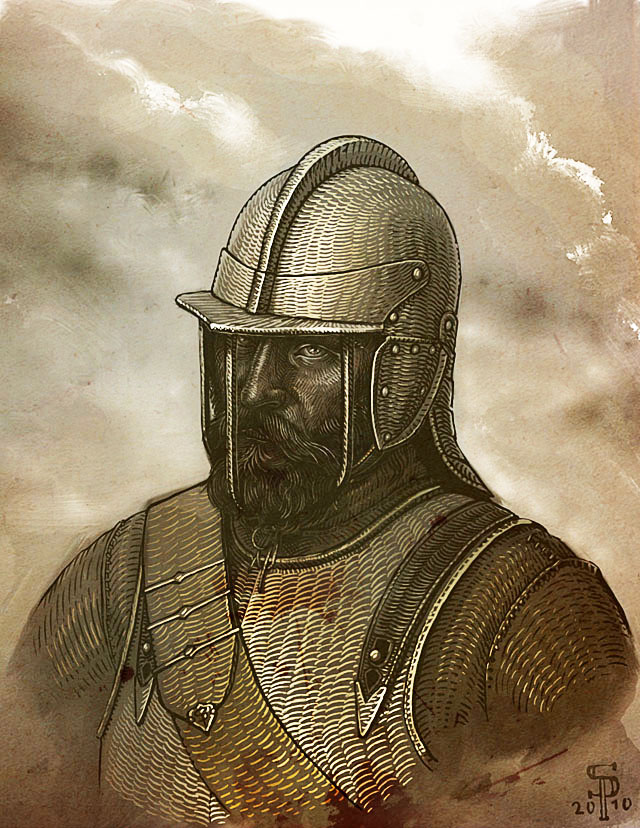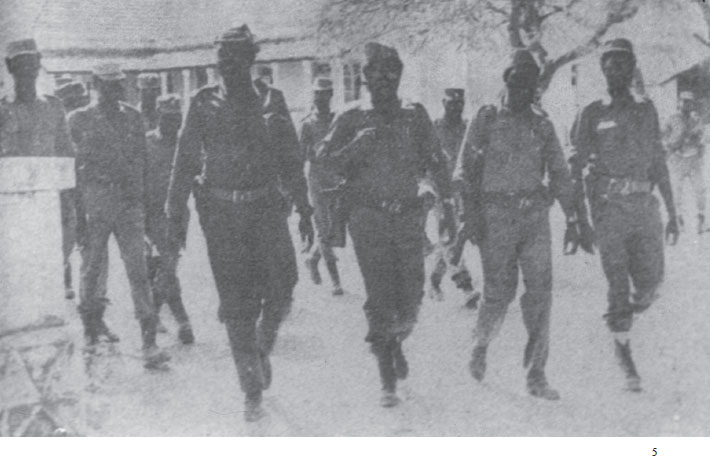I played out a Falklands War scenario using Cold War 83 rules yesterday. I’ve been
working on a set of scenarios that I’ve adapted from Rules of Engagement so they would work with the Falklands and Cold
War 83 rules. This has meant I’ve had to produce Army Lists as the scenarios
allow the players to choose a value, generally an understrength platoon, force
which has a ‘combat effectiveness’ and then strengthen it using additional ‘support
points’. The principle is that the better quality the force is, as expressed
through its ‘bottle’ value, the fewer troops you get. There are also
deployment, game length and victory criteria rules for each scenario.
The simplest scenario is ‘Advance to Contact’ as it doesn’t
involve any ‘extras’ like hidden deployment, supporting artillery or
fortifications. The premise is that two opposing patrols have bumped into one
another in no-man’s land and win by inflicting enough casualties on the other
side to break them before they reach their own break point.
Here’s the table I used.
Both sides were of good quality with base bottle values of 8
although the British did have the advantage of 3 GPMGs and 24 men as opposed to
1 GPMG and 21 men for the Argentines, although the latter did have a sniper and
a couple of grenade launchers.
The British had the initiative and got to choose which table
edge they would deploy on and also whether this was a day or night action. They
elected to deploy on the top table edge in the picture above and went for a
daytime patrol. The roll for weather indicated this was a clear day but the
roll for time of day gave me 12 turns to dusk. Given that the scenario is 12
turns long if the opposing forces deploy on the short table edges that fitted
with a late afternoon encounter that would end with reduced visibility allowing
one or both sides to slip away.
The Argentines had one full strength section of ten men, armed mainly with G3
Rifles and Grenade Launchers, together with a GPMG. The HQ group (commander, NCO, sniper and radio operator)
was supported together with an understrength section
armed mainly with SMGs. The lack of long range firepower and the terrain were
to be the Argentinian’s greatest handicaps. To close with the British they had
to bunch in the dead ground in the lee of the central hill in the picture,
which meant that once the paras started getting rounds down from their GPMGs the
risk of suppression was increased. This is exactly what happened – a few failed
bottle rolls for movement meant one of two Argies got caught by GPMG fire
crossing open ground with the result they became casualties and the men in
proximity were suppressed.
In the picture above all the figures with a red band are
suppressed and two have reduced bottle values, as denoted by the dice. The
figure in the foreground has been hit so badly that any further reduction will
mean he’s removed from play. In reality he’s probably severely wounded and
about to die…sobering thought.
It wasn’t all one sided though. The Argentinian sniper
killed one para outright with a single shot at long range and a couple of
others fell victim to ‘double taps’ from commandos with G3s who got themselves
into good firing positions.
Weight of fire told in the long run however and by the end
of turn 7 the paras had gone firm on two pieces of high ground that dominated
the battlefield and had effectively pinned down their opponents who were
steadily taking more casualties.
In the above picture, taken from behind the Argentine
position, the funnelling effect of the dead ground can be seen. With exception
of the figure with a double 5 die next to it, all the figures with dice next to
them have suffered a reduction in bottle, either because they were caught in
open ground by British fire or because they were close enough to a comrade who
was hit by GPMG fire. Senor Double Five
has had his bottle increased as a result of a clean kill at extreme range. All
the figures with a yellow marker are prone. In the background the British
dominance of the two hills on the left and right respectively can be seen.
The Argentinians had taken seven casualties removed from
play by turn 7, meaning they’d reached their break point (one third of starting
strength rounded down) and had to dice against the commander’s bottle to see if
they fought on. He was still on his starting value of 9 and easily passed. The
paras had eight men removed from play but their break point was at half
strength rounded down.
I’d been playing for a little over two hours and couldn’t
see much happening for the remaining turns. To cross open ground to try and
close in daylight was suicide but the long range firefight was proving inconclusive
as nearly everyone with a clear line of sight had gone prone and/or had lost a
point or two of bottle. The Argentine GPMG was out of action and neither of the grenade launchers had been able to get within range.
Accordingly, I took a decision to end it there as a draw.
The encounter had been violent and bloody with lots of fire and movement to
begin with and then everything slowing down as the troops became more cautious.
Lessons from this are that machine guns in daylight quickly
close down a battlefield and that Argentine Special Forces are more than
capable of giving a good account of themselves.










































